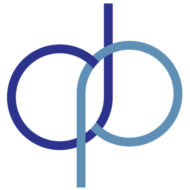DiaPharma CS GK

Catalog #: DPG266-25
Packaging: Vial/25mg
Method: Chromogenic
Type: Substrate
Use: For Research Use Only
Description
Former Chromogenix substrate S-2266 now has as an identical replacement product, DiaPharma CS – GK, product number DPG266-25.
DiaPharma CS – GK is a chromogenic peptide substrate for glandular kallikrein (GK). DiaPharma CS – GK may be used for kallikrein activity determination in purified preparations, urine, and saliva. A urine kallikrein activity research method using substrate H-D-Val-Leu-Arg-pNA is available.
Composition
Each vial contains chromogenic substrate H-D-Val-Leu-Arg-pNA · 2HCl 25 mg and mannitol 60 mg added as a bulking agent.
H-D-Val-Leu-Arg-pNA · 2HCl
MW: 579.6
Principle
H-D-Val-Leu-Arg-pNA + Enzyme → H-D-Val-Leu-Arg-OH + pNA
Background
Biochemistry of Kallikrein
- Synonym: Fletcher Factor
- Molecular mass: 100 000 D
- Synthesis: Liver
Plasma concentration
- 35 – 50mg/l
- 50 – 150%
- 0.5 – 1.5E/ml
Prekallikrein is the inactive precursor (zymogen, proenzyme) of kallikrein. After activation of the intrinsic coagulation system, prekallikrein – with participation of high molecular weight kininogen – is bound to negatively charged surfaces. Factor XIIa then activates it to kallikrein. In turn, kallikrein in a positive recoupling mechanism activates factor XII to factor XIIa.
Clinical significance of Kallikrein
We differentiate between the hereditary deficiency, which occurs extremely seldom, and the acquired kallikrein deficiency. The acquired deficiency can be caused by interference of synthesis (serious liver disease) as well as by an increased consumption (e.g. DIC, septic shock, nephrotic syndrome).
Clinical or Research use of Kallikrein
- Impairment of the kallikrein system
- Suspected hereditary prekallikrein deficiency
- Prolongation of the aPTT of unknown reason
PKA Testing Products
Fractionation of Human plasma to produce Human Albumin and Immunoglobulin preparations can also result in concentration of PKA. At high levels, PKA can release kallikrein and patients may go into shock. PKA is therefore removed by post fractionation chromatography. Blood product licensing authorities require manufacturers to validate each batch of final product before it can be released. PKA content has been limited to levels of less than 35 IU/ml as outlined in European Pharmacopoeia guidelines.
PKA assays are in general performed using in-house methods with an externally sourced chromogenic substrate (Chromogenix S-2302™) and standards (Human PreKallikrein Pool, PW30304). An in-house method can be a difficult and laborious process, so a ready-to-use commercially available PKA assay kits can streamline the release of human Immunoglobulin and Albumin preparations.
The ready-to-use commercial kits tests measures PKA present in the blood product which will activate a known concentration of Prekallikrein to release the enzyme Kallikrein. The kallikrein formed releases chromogene p-nitroaniline (pNA) from the chromogenic kallikrein substrate. The rate at which pNA is released is measured photometrically in a microtiter plate reader. The amount of pNA released is proportional to the amount of PKA present in the preparation. The assay can be performed as rate method or by end point.
